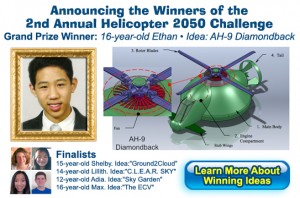Gerd Binnig’s and Heinrich Rohrer’s scanning tunneling microscope (STM) has fueled much of the nanotechnology research effort around the world. Developed in an IBM laboratory about 35 years ago (ETA May 2, 2013: the year was 1981), it was the first microscope that allowed researchers to access material at the nanoscale (there’s more about these researchers and their accomplishment in my May 26, 2011 posting). Don Eigler, also working for IBM, was the first to use an STM to manipulate the placement of atoms on a surface. In 1989, he ‘nudged’ xenon atoms into the shape of three letters, IBM (there’s more about Eigler in this Wikipedia essay).
Today, May 1, 2013, IBM has released an atomic movie, A Boy and His Atom, which was made with their seminal scanning tunneling microscope,
If the story is not apparent to you, here’s how the IBM May 1, 2013 news release describes the movie,
The movie’s plot line depicts a character called Atom who befriends a single atom and goes on a “playful journey.” This journey involves dancing, jumping on a trampoline, and playing catch. It’s unlikely to win any Oscars, but that’s not really the point; it’s designed to get people inspired about science.
In almost five years of writing this blog, this is the first time I’ve seen a physical description of an STM and it is one big sucker (from the news release),
… Christopher Lutz, Research Scientist, IBM Research. “It weighs two tons, operates at a temperature of negative 268 degrees Celsius and magnifies the atomic surface over 100 million times. [emphasis mine] The ability to control the temperature, pressure and vibrations at exact levels makes our IBM Research lab one of the few places in the world where atoms can be moved with such precision.”
Making a movie with an STM is not as easy as it might seem (from the news release; Note: a link has been removed),
Remotely operated on a standard computer, IBM researchers used the microscope to control a super-sharp needle along a copper surface to “feel” atoms. Only 1 nanometer away from the surface, which is a billionth of a meter in distance, the needle can physically attract atoms and molecules on the surface and thus pull them to a precisely specified location on the surface. The moving atom makes a unique sound that is critical feedback in determining how many positions it’s actually moved.
There is a corporate agenda associated with this particular public relations gambit, from the news release,
As computer circuits shrink toward atomic dimensions — which they have for decades in accordance with Moore’s Law — chip designers are running into physical limitations using traditional techniques. The exploration of unconventional methods of magnetism and the properties of atoms on well-controlled surfaces allows IBM scientists to identify entirely new computing paths.
Using the smallest object available for engineering data storage devices – single atoms – the same team of IBM researchers who made this movie also recently created the world’s smallest magnetic bit. They were the first to answer the question of how many atoms it takes to reliably store one bit of magnetic information: 12. By comparison, it takes roughly 1 million atoms to store a bit of data on a modern computer or electronic device. If commercialized, this atomic memory could one day store all of the movies ever made in a device the size of a fingernail.
“Research means asking questions beyond those required to find good short-term engineering solutions to problems. As data creation and consumption continue to get bigger, data storage needs to get smaller, all the way down to the atomic level,” continued Heinrich [Andreas Heinrich, Principle Investigator, IBM Research]. “We’re applying the same techniques used to come up with new computing architectures and alternative ways to store data to making this movie.”
Guinness World Records has acknowledged A Boy and His Atom as the world’s smallest movie. For now.

